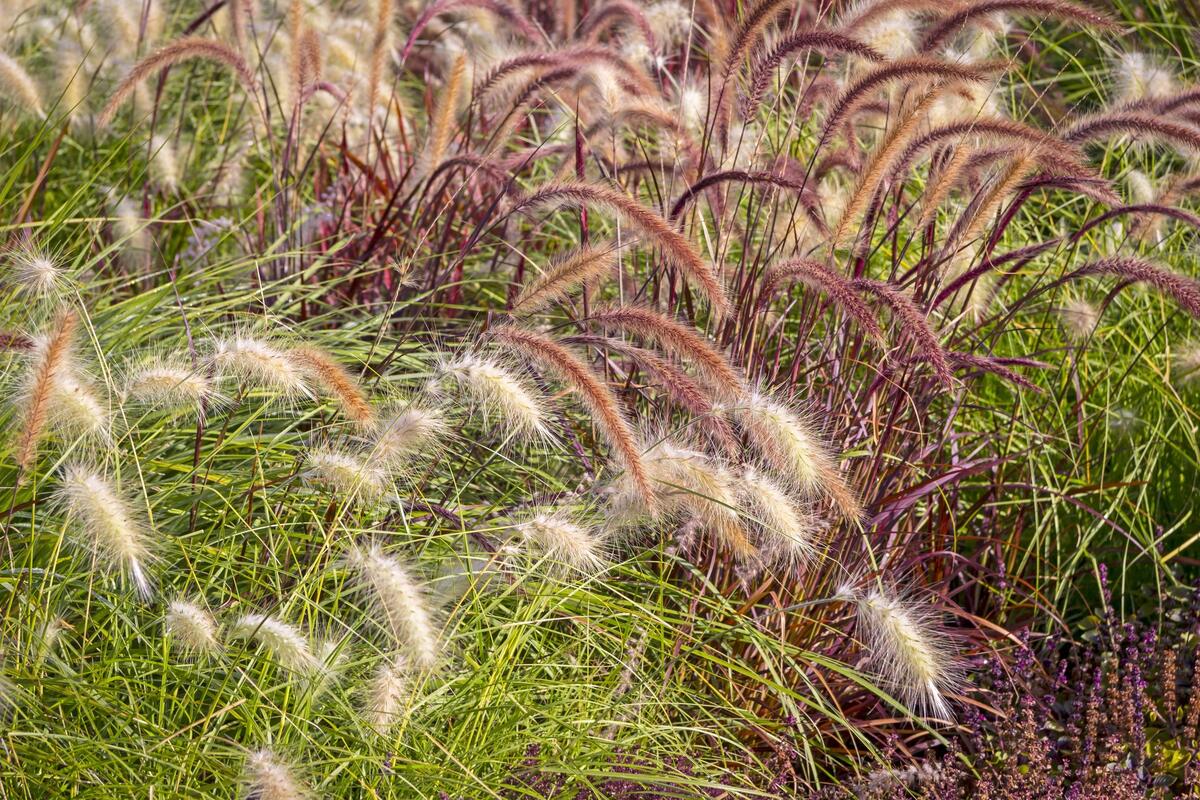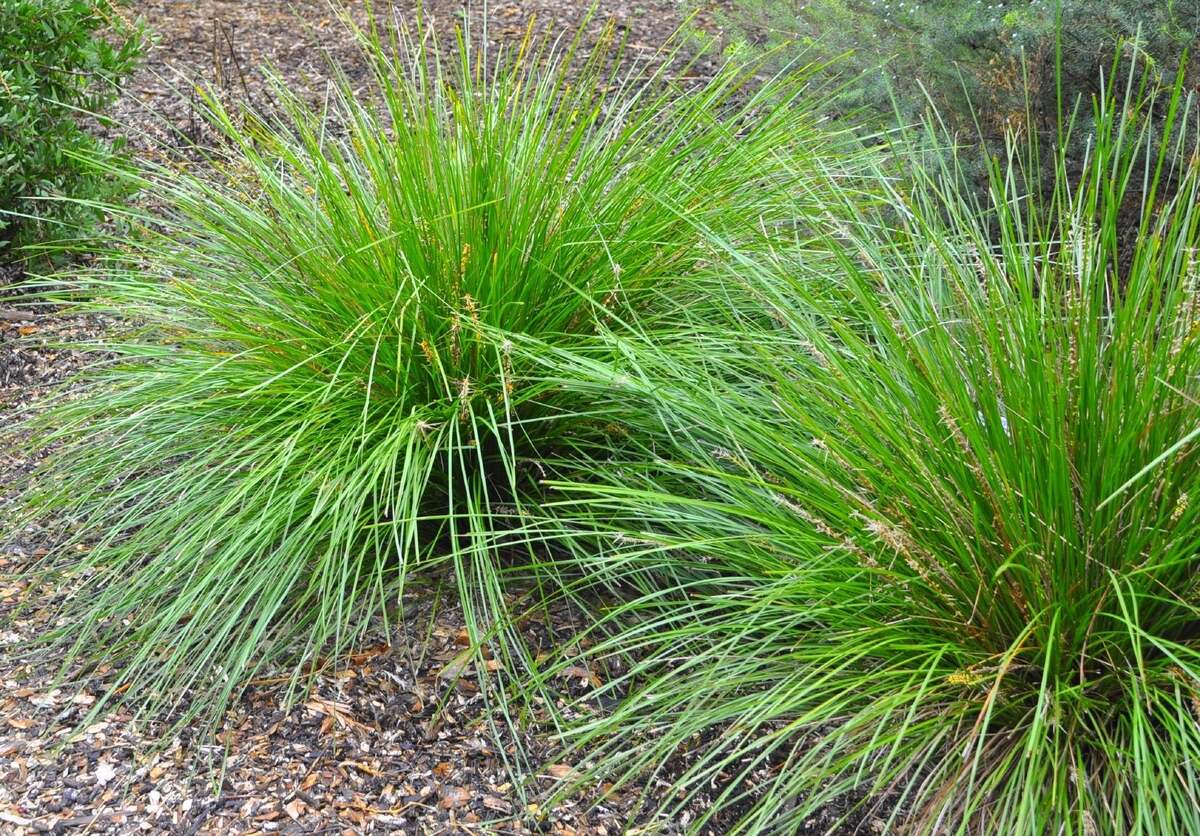Home>Gardening & Outdoor>Landscaping Ideas>When To Plant Ornamental Grass Seed


Landscaping Ideas
When To Plant Ornamental Grass Seed
Modified: March 28, 2024
Learn the best timing for planting ornamental grass seed to enhance your landscaping ideas. Discover expert tips for successful grass seed planting.
(Many of the links in this article redirect to a specific reviewed product. Your purchase of these products through affiliate links helps to generate commission for Storables.com, at no extra cost. Learn more)
Introduction
Read more: How To Plant Ornamental Grass
Understanding Ornamental Grass
Ornamental grasses are versatile, low-maintenance plants that add texture, movement, and visual interest to any landscape. These graceful plants come in a wide array of colors, textures, and sizes, making them a popular choice for gardeners and landscapers alike. Whether used as a focal point, a border, or a ground cover, ornamental grasses bring a unique charm to outdoor spaces.
Key Takeaways:
- Plant ornamental grass seed in spring or early summer for vibrant, healthy growth. Consider soil type, sunlight, climate, and intended use for successful landscaping.
- Caring for ornamental grass involves watering, pruning, fertilization, division, and winter care. These practices support the plants’ health and vibrant beauty throughout the seasons.
Factors to Consider Before Planting Ornamental Grass Seed
Before delving into the best time to plant ornamental grass seed, it's crucial to consider a few key factors to ensure successful growth. Soil type, sunlight exposure, climate, and intended use are all important considerations. Understanding these factors will help determine the most suitable varieties of ornamental grass for a particular landscape and ensure they thrive once planted.
Stay tuned as we explore the best practices for planting and caring for ornamental grasses, from choosing the right time to plant the seeds to providing the proper care for healthy, vibrant growth.
Read more: How To Plant Ornamental Grass
Understanding Ornamental Grass
Ornamental grasses are a diverse group of plants valued for their unique characteristics and ornamental appeal. Unlike traditional lawn grasses, ornamental grasses are grown for their aesthetic qualities rather than for turfgrass or forage. These plants come in a wide range of sizes, shapes, and colors, offering an abundance of options for landscaping and garden design.
One of the key attractions of ornamental grasses is their versatility. They can be used to create privacy screens, add texture to flower beds, or serve as standalone focal points in a landscape. Their graceful foliage and striking seed heads provide visual interest throughout the seasons, making them a valuable addition to any outdoor space.
Ornamental grasses are also prized for their low-maintenance nature. Once established, they are generally drought-tolerant and require minimal care, making them an excellent choice for busy gardeners. Additionally, many varieties are deer-resistant and attract beneficial wildlife, further enhancing their appeal in diverse landscapes.
When selecting ornamental grasses for a landscaping project, it’s important to consider factors such as the plant’s mature size, growth habit, and preferred growing conditions. Some grasses are clump-forming, while others are spreading, so understanding their growth habits is essential for proper placement within the landscape. Similarly, considering the amount of sunlight, soil type, and moisture levels is crucial for ensuring the success of these plants in their designated locations.
As we delve deeper into the world of ornamental grasses, we will explore the factors to consider before planting ornamental grass seed, the best time to plant these seeds, and the steps for caring for these graceful plants to achieve a vibrant and thriving landscape.
Key Takeaways:
- Plant ornamental grass seed in spring or early summer for vibrant, healthy growth. Consider soil type, sunlight, climate, and intended use for successful landscaping.
- Caring for ornamental grass involves watering, pruning, fertilization, division, and winter care. These practices support the plants’ health and vibrant beauty throughout the seasons.
Factors to Consider Before Planting Ornamental Grass Seed
Before embarking on the journey of planting ornamental grass seed, it is essential to consider several key factors that will contribute to the success and vibrancy of these graceful plants in the landscape. By carefully evaluating these factors, gardeners and landscapers can make informed decisions about the selection, placement, and care of ornamental grasses, ensuring a visually appealing and thriving outdoor space.
- Soil Type: Understanding the soil composition and drainage characteristics of the planting area is crucial when selecting ornamental grass varieties. Some grasses thrive in well-drained, sandy soils, while others prefer moisture-retentive loamy soils. By matching the grass species to the soil conditions, gardeners can optimize the plants’ growth and overall health.
- Sunlight Exposure: Different ornamental grasses have varying sunlight requirements. Some thrive in full sun, while others prefer partial shade. Assessing the sunlight patterns in the landscape will help determine the most suitable locations for planting different grass species, ensuring they receive the optimal light conditions for robust growth.
- Climate: Consider the local climate and the hardiness of ornamental grass species. Some grasses are more tolerant of cold temperatures, while others thrive in warmer climates. Understanding the climate considerations will guide the selection of grass varieties that are well-suited to the specific environmental conditions of the planting site.
- Intended Use: Define the purpose of the ornamental grasses within the landscape. Whether they are intended for creating borders, adding texture to flower beds, or serving as focal points, aligning the selection and placement of grass species with their intended use will ensure that they fulfill their aesthetic and functional roles effectively.
By carefully evaluating these factors, gardeners and landscapers can make informed decisions about the selection, placement, and care of ornamental grasses, ensuring a visually appealing and thriving outdoor space.
Stay tuned as we explore the best time to plant ornamental grass seed and the essential steps for successful planting and care, setting the stage for vibrant and flourishing landscapes.
Read more: When To Cut Ornamental Grass
Best Time to Plant Ornamental Grass Seed
Timing plays a crucial role in the successful establishment of ornamental grasses from seed. Understanding the best time to plant ornamental grass seed is essential for ensuring optimal growing conditions and vibrant, healthy growth. While the specific timing may vary based on the local climate and the selected grass species, there are general guidelines that can help gardeners and landscapers make informed decisions about the ideal planting time.
Spring and early summer are generally the most favorable times to plant ornamental grass seed in many regions. These seasons provide the warmth and moisture needed for the seeds to germinate and the young plants to establish strong root systems. By planting during this period, the grasses have ample time to develop before the onset of winter, ensuring better resilience and vigor when the following growing season arrives.
It’s important to consider the frost dates in the local area when planning the timing of seed planting. Planting too early, when the risk of frost still exists, can jeopardize the germination and survival of the grass seedlings. Similarly, delaying the planting too close to the onset of winter may not allow the young plants sufficient time to establish themselves before the colder months.
For warm-season ornamental grass species, planting in late spring allows the seeds to germinate and the plants to establish before the peak of summer heat. This timing enables the grasses to develop robust root systems that can withstand the stresses of hot, dry weather. Conversely, cool-season grasses may benefit from early spring planting, taking advantage of the cooler temperatures and favorable moisture levels for initial growth.
While the general guidelines for planting ornamental grass seed provide a framework for optimal timing, it’s important to consider the specific requirements of the chosen grass species and the local climate. By aligning the planting time with the natural growth patterns of the selected grasses and the seasonal conditions of the region, gardeners can set the stage for successful establishment and vibrant, flourishing ornamental grasses in the landscape.
As we delve deeper into the world of ornamental grasses, we will explore the essential steps for planting and caring for these graceful plants, providing valuable insights for creating stunning and resilient landscapes.
Plant ornamental grass seeds in the spring after the last frost date for your area. This will give the seeds the best chance to establish and grow before the heat of summer.
Steps to Plant Ornamental Grass Seed
Planting ornamental grass seed is a rewarding process that sets the stage for vibrant, graceful landscapes. By following a few essential steps, gardeners and landscapers can ensure the successful establishment of ornamental grasses, creating visually appealing and low-maintenance outdoor spaces. Here are the key steps to plant ornamental grass seed:
- Site Preparation: Begin by preparing the planting site. Clear the area of any debris, rocks, or weeds, and work the soil to create a loose, well-drained bed for the grass seed. Amending the soil with organic matter can improve its structure and fertility, providing a conducive environment for seed germination and plant growth.
- Seed Sowing: Sow the ornamental grass seed evenly across the prepared bed. Depending on the grass species, the depth of sowing may vary, so it’s important to follow the specific guidelines for each variety. Lightly rake the soil after sowing to cover the seeds with a thin layer of soil, ensuring good seed-to-soil contact for successful germination.
- Watering: After sowing the grass seed, water the planting bed gently to moisten the soil. It’s important to keep the soil consistently moist but not waterlogged during the germination phase. Providing adequate moisture supports the emergence of healthy seedlings and promotes strong root development.
- Maintenance: Monitor the planted area regularly to ensure that the soil remains moist and to watch for the emergence of seedlings. As the young grass plants develop, it’s important to provide consistent moisture and protect them from competing weeds. Thinning the seedlings, if necessary, can promote healthier growth and adequate spacing for the mature plants.
- Establishment: As the ornamental grass seedlings grow and develop, they will require ongoing care to support their establishment. Regular watering, especially during dry periods, and light fertilization can encourage robust growth and the development of strong root systems. It’s important to avoid over-fertilizing, as excessive nutrients can lead to weak, leggy growth in ornamental grasses.
By following these steps, gardeners and landscapers can plant ornamental grass seed with confidence, setting the stage for the emergence of graceful, vibrant landscapes. Understanding the specific requirements of the chosen grass species and providing attentive care during the establishment phase are essential for achieving successful growth and long-term beauty in the outdoor environment.
As we continue our journey into the world of ornamental grasses, we will explore the essential practices for caring for these graceful plants, nurturing their health and beauty to create stunning and resilient landscapes.
Caring for Ornamental Grass
Once ornamental grasses are established, they require minimal maintenance to thrive and enhance the landscape with their graceful beauty. Caring for ornamental grass involves a few essential practices that support the plants’ health, vigor, and visual appeal, ensuring that they continue to contribute to vibrant and low-maintenance outdoor spaces. Here are the key aspects of caring for ornamental grass:
- Watering: Ornamental grasses are generally drought-tolerant once established, but they benefit from regular watering, especially during hot, dry periods. Providing consistent moisture supports healthy growth and helps the plants maintain their vibrant color and structural integrity. However, it’s important to avoid overwatering, as excessive moisture can lead to root rot and other issues.
- Pruning: In late winter or early spring, it’s beneficial to trim back ornamental grasses to remove the previous year’s growth and make way for the new growth. This practice rejuvenates the plants, promotes fresh foliage and enhances their visual appeal. Depending on the grass variety, the pruning height may vary, so it’s important to follow specific guidelines for each species.
- Fertilization: Ornamental grasses generally have modest fertility requirements. A light application of a balanced, slow-release fertilizer in early spring can provide the necessary nutrients for healthy growth and vibrant foliage. However, it’s important to avoid over-fertilization, as excessive nutrients can lead to overly lush growth and diminished visual appeal.
- Division: Over time, some clump-forming ornamental grasses may benefit from division to maintain their vigor and prevent overcrowding. Dividing the plants every few years can rejuvenate them, promote better air circulation, and prevent the center of the clump from dying out. This practice also allows gardeners to propagate new plants from the divided sections.
- Winter Care: Many ornamental grasses provide visual interest during the winter months, especially when their foliage catches the light and sways in the wind. Leaving the grasses standing through the winter can also provide habitat for beneficial insects and wildlife. However, in regions with heavy snow or prolonged periods of freezing temperatures, it may be necessary to cut back the grasses to prevent damage and promote new growth in the spring.
By incorporating these caring practices into the maintenance routine, gardeners and landscapers can ensure that ornamental grasses remain vibrant, healthy, and visually appealing throughout the seasons. With their low-maintenance nature and striking ornamental appeal, these graceful plants continue to enrich outdoor spaces with their unique charm and beauty.
As we conclude our exploration of ornamental grasses, we have gained valuable insights into the factors to consider before planting ornamental grass seed, the best time to plant these seeds, and the essential steps for successful planting and care. By embracing the beauty and versatility of ornamental grasses, we can create stunning and resilient landscapes that captivate the senses and inspire the soul.
Conclusion
Ornamental grasses offer a wealth of benefits to landscapes, from their graceful beauty to their low-maintenance nature. As we conclude our exploration of these versatile plants, it’s evident that they bring a unique charm and visual interest to outdoor spaces, enriching gardens, public parks, and commercial landscapes alike. Understanding the factors to consider before planting ornamental grass seed, the best time to plant these seeds, and the essential steps for successful planting and care is crucial for achieving vibrant and thriving landscapes.
By carefully evaluating soil type, sunlight exposure, climate, and intended use, gardeners and landscapers can make informed decisions about the selection, placement, and care of ornamental grasses, ensuring visually appealing and low-maintenance outdoor spaces. The best time to plant ornamental grass seed, typically in spring and early summer, provides the optimal conditions for successful establishment and vibrant, healthy growth.
The steps to plant ornamental grass seed, from site preparation to establishment, set the stage for the emergence of graceful and vibrant landscapes. Caring for ornamental grass involves practices such as watering, pruning, fertilization, division, and winter care, supporting the plants’ health, vigor, and visual appeal throughout the seasons.
With their diverse forms, colors, and textures, ornamental grasses offer endless possibilities for creating stunning and resilient landscapes. Whether used as focal points, borders, or ground covers, these graceful plants bring a touch of natural elegance to outdoor environments, captivating the senses and inspiring a deeper connection with nature.
As we embrace the beauty and versatility of ornamental grasses, we have the opportunity to cultivate landscapes that not only showcase their ornamental appeal but also provide valuable habitat for wildlife and contribute to sustainable, low-impact gardening practices. By incorporating these graceful plants into our outdoor spaces, we can create environments that delight the eye, soothe the soul, and invite moments of tranquil reflection.
In closing, the world of ornamental grasses invites us to explore, create, and connect with the inherent beauty of the natural world. By understanding their unique characteristics and embracing their role in the landscape, we can cultivate outdoor spaces that resonate with enduring allure and timeless elegance, enriching our lives and the environment in which we live.
Frequently Asked Questions about When To Plant Ornamental Grass Seed
Was this page helpful?
At Storables.com, we guarantee accurate and reliable information. Our content, validated by Expert Board Contributors, is crafted following stringent Editorial Policies. We're committed to providing you with well-researched, expert-backed insights for all your informational needs.















0 thoughts on “When To Plant Ornamental Grass Seed”